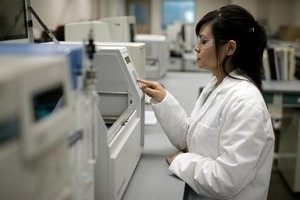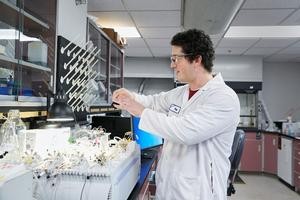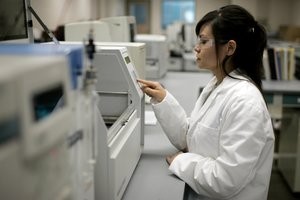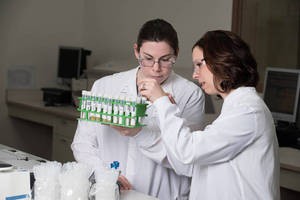Determination of Total Nitrogen Content in Sewage by Ultraviolet Spectrophotometry
The total nitrogen in sewage can be digested by alkaline potassium persulfate ultraviolet spectrophotometry. The name of this method sounds long, but it is actually very simple to operate. The principle is that in an alkaline medium of 120℃-124℃, potassi…
Water quality detector-Steps to detect ozone content in water
Generally, drinking water or natural water after ozone disinfection can be directly measured by potassium iodide-DPD on-site colorimetric method, and the range is 0.02mg/L-2.50mg/L. The main principle is that ozone in water can react with potassium iodide
Water quality detector-Determination of total silicon content in water by gravimetric method
The gravimetric method to detect the total silicon content in water is to evaporate a certain amount of acidified water sample to dryness, and then use hydrochloric acid to convert the silicon compound into colloidal precipitation. After dehydration, filt
Water quality detector-Detailed detection steps of aniline compounds in water
For aniline compounds in water, azo spectrophotometry can be used to detect the concentration range of 0.08mg/L-2.00mg/L. Its main principle is to combine aniline compounds with sodium nitrite under acidic conditions. Nitrogenation, and then coupled with
Water quality detector-Detailed testing steps for total zinc content in sewage
The content of total zinc in sewage was detected by dithizone spectrophotometry. The principle is that in the acetate buffer medium with pH value of 4.0-5.5, zinc ions in water and dithizone form red chelate. After extraction with carbon tetrachloride, co
Water quality detector-The specific method of detecting pentachlorophenol in water
Pentachlorophenol is believed to be unfamiliar to many people. It is actually an organic compound. It was previously used as a herbicide for rice, and is currently mainly used for the preservation of wood, textiles and other items. Generally, the headspac
Water quality detector-Detailed steps of detecting fluorine ion in water by ion electrode method
The principle of using ion electrode to detect fluoride in water is to use lanthanum fluoride sensing unit as indicator electrode and saturated calomel electrode or silver chloride electrode as reference electrode. When the strength of total ions in water
Detailed steps for the detection of total nitrogen in water by distillation spectrophotometry
The total nitrogen in daily water generally includes organic nitrogen, ammonia nitrogen, nitrite nitrogen and nitrate nitrogen. Nitrate nitrogen and nitrite nitrogen in water samples can be reduced to ammonium sulfate with zinc-sulfuric acid; organic nitr
Reclaimed water quality-mercury testing steps
This method is suitable for the detection of mercury content in wastewater, surface water, and reclaimed water in the range of 0.1ug/L-100ug/L. If the mass concentration of mercury in the collected water sample exceeds 100ug/L, it needs to be diluted and
Specific steps of detecting sulfate in sewage by Ion Chromatography
We have already introduced the gravimetric method and barium chromate volumetric method to the detection methods of sulfate in water. Today we will introduce some methods for the detection of sulfate in sewage by ion chromatography. The principle is tha













